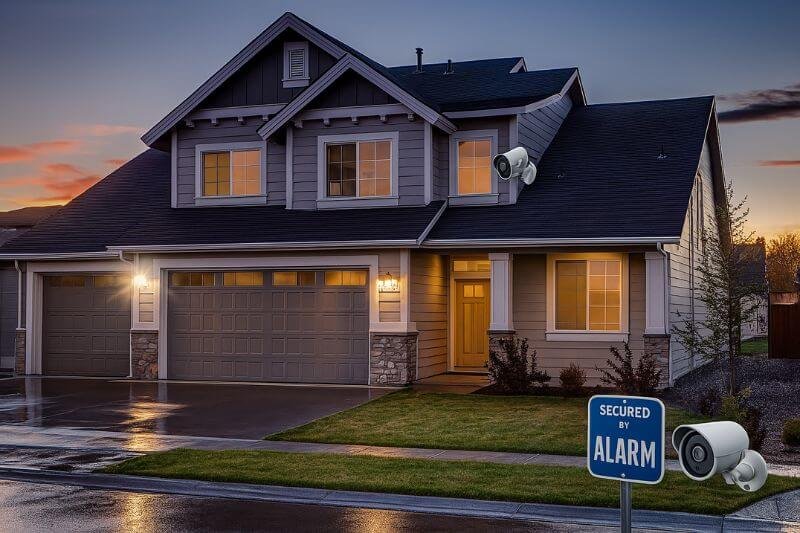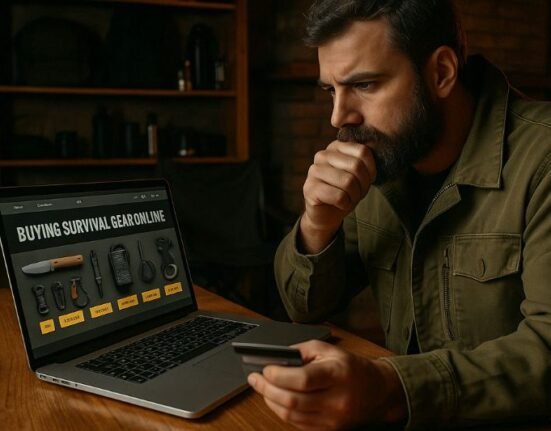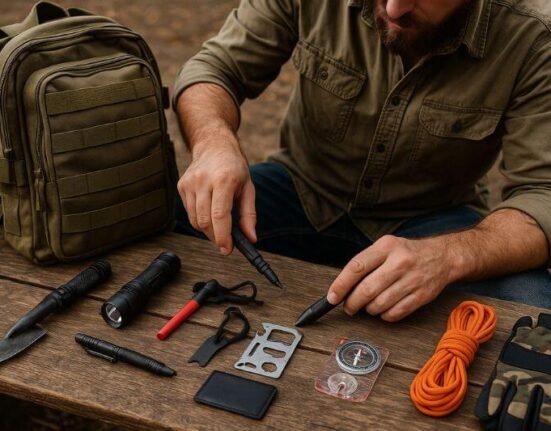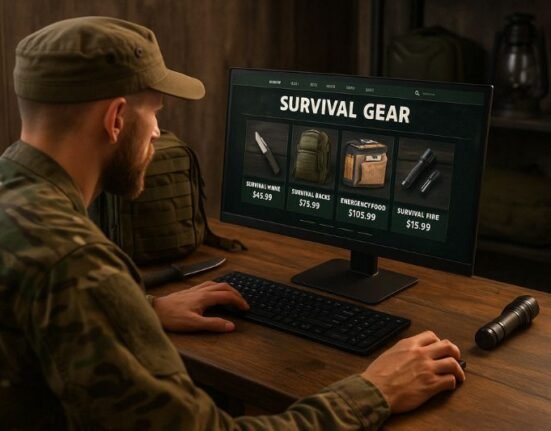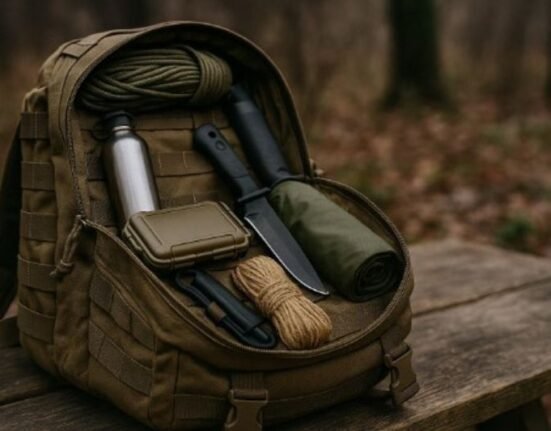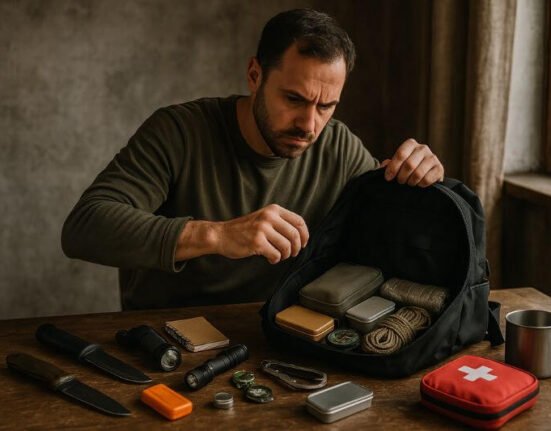In 2025, home security systems are no longer optional—they’re essential. With rising crime rates, unstable infrastructures, and slower emergency response times, your ability to detect and deter intruders is more important than ever.
This guide gives you a tactical, no-nonsense overview of the best home security systems available today. Whether you’re protecting a suburban home, an off-grid cabin, or an urban apartment, you’ll find what you need to stay ahead of threats.
🧠 PART 1: WHY 2025 DEMANDS A NEW APPROACH TO HOME SECURITY
1. The Modern Threat Landscape Has Changed
Gone are the days when a simple door lock and a “Beware of Dog” sign would suffice. Criminals today are more desperate, more equipped, and more brazen—especially during blackouts, natural disasters, or economic disruptions.
📈 According to the FBI’s 2024 report, residential break-ins increased by 18% in urban areas and 29% in rural zones during grid outages.
What changed?
- Longer emergency response times
- Increased poverty and social unrest
- Technological workarounds by criminals
- More remote, understaffed neighborhoods
“Security is no longer a luxury. It’s a layered strategy that starts with detection and ends with resilience.”
— U.S. Department of Homeland Security, 2024 Advisory
2. What Makes a Good Home Security System in 2025?
Not all systems are created equal. In 2025, a good security system is one that still functions when the grid goes down, when Wi-Fi is cut, or when you’re not home.
🔎 Key Features to Look For:
- ✅ Battery Backup: Essential during power outages
- ✅ Cellular Connectivity: Don’t rely on Wi-Fi alone
- ✅ 24/7 Monitoring: Either professional or via your own network
- ✅ Mobile App Control: Remote access to cameras and alarms
- ✅ Smart Home Integration: Lights, locks, and alerts
- ✅ Tamper Alerts: For door panels, cameras, and cables
- ✅ Redundancy: Backup sensors, local storage, multiple alert channels
🚨 Optional but Powerful Add-ons:
- Glass break sensors
- Outdoor sirens with flashing lights
- Panic buttons (fixed or wearable)
- Private cloud storage
- Vehicle driveway sensors
3. Comparison Table: Top 5 Home Security Systems (2025)
| Brand | Best For | Strengths | Limitations |
|---|---|---|---|
| SimpliSafe | Apartment or small home | Easy setup, cellular backup, affordable | Limited outdoor camera range |
| ADT Control | Full-service protection | Pro monitoring, strong brand, smart features | Long contracts, higher monthly fees |
| Ring Alarm Pro | DIY smart home users | Excellent app, Amazon Alexa integration | Cloud storage required for full features |
| Abode | Custom setups | Works with Z-Wave & Zigbee, flexible pricing | Some advanced features require subscription |
| Arlo Secure | Camera-heavy defense | High-res video, solar options, smart alerts | Battery life varies, can get expensive |
🔧 Pro Tip: Combine wireless sensors (motion + door/window) with a centralized smart hub and backup power. This gives you coverage even during internet or utility failures.
🔧 PART 2: PERFORMANCE, INSTALLATION & USER PROFILES
4. Performance Under Pressure: What Really Matters
A fancy app or sleek camera means nothing if the system fails when you need it most. In 2025, the best home security systems must perform under stress—during power loss, grid failure, or a targeted breach attempt.
🧪 What to Test Before Relying on a System:
- 🔄 Backup switching: Does it auto-switch to battery or LTE?
- 📶 Signal strength: Is it reliable in your entire home?
- 🌐 App lag: Can you arm/disarm without delay?
- 🔔 Alarm volume: Is it loud enough to alert or scare?
📌 FEMA’s 2024 Preparedness Manual recommends at least 110 decibel indoor alarms and 115 dB+ sirens for exterior use to ensure effectiveness during civil disturbances or rural isolation.
🛠️ Reliability Tips:
- Place sensors away from vents or heat sources.
- Avoid Wi-Fi-only systems unless paired with LTE or local SD storage.
- Test all components monthly—not just the main panel.
5. Installation: DIY vs Professional — Which Is Best for You?
The home security market now offers two major paths: fully DIY systems or professionally installed and monitored ones. The right choice depends on your budget, skills, and how much control you want.
⚒️ DIY Systems (e.g. SimpliSafe, Ring, Abode)
- ✅ Fast install (under 2 hours)
- ✅ Cheaper upfront
- ✅ Total control of settings
- ❌ No on-site expert advice
- ❌ Can miss blind spots without training
“DIY systems are ideal for confident homeowners who are detail-oriented and have a backup power/comm plan.”
— CivilFall Field Preparedness Team
🧰 Professional Systems (e.g. ADT, Vivint)
- ✅ Expert installation and coverage mapping
- ✅ Better integration with fire/smoke/carbon sensors
- ✅ Often include 24/7 emergency dispatch
- ❌ Monthly contracts, installation fees
- ❌ Less flexibility if you relocate
📌 Hybrid Option: Some providers now offer pro-assisted remote installs, guiding you virtually for a better balance.
6. Choose Based on Your Risk Profile and Location
Not all homeowners face the same threats. A ranch in Montana has different needs than an apartment in New York City. Your home security system should match your risk environment, not a one-size-fits-all marketing brochure.
🏢 Urban Apartment or Condo
- Prioritize: Video doorbells, window sensors, remote access
- Avoid: Overly loud alarms in shared buildings
- Optional: Elevator cameras, hallway monitors
🏘️ Suburban Family Home
- Prioritize: Perimeter sensors, garage door alerts, motion lights
- Optional: Voice alerts to scare off trespassers
🌲 Rural or Off-Grid Property
- Prioritize: LTE or satellite connectivity, solar camera units
- Must have: Backup power, wide-angle outdoor cameras, driveway sensors
- Optional: Trail cams, infrared night vision
👴 Elderly or Disabled Residents
- Prioritize: Wearable panic buttons, voice-activated systems
- Must have: Battery backup for medical devices
💡 Remember: Your home’s defense starts before someone touches a lock. Early detection = more time to act.
💰 PART 3: COSTS, SETUPS & FINAL RECOMMENDATIONS
7. How Much Should You Spend on a Home Security System in 2025?
There’s a big difference between buying a security system… and investing in resilience. So what’s the real cost in 2025?
💸 Key Cost Components:
- Starter Kit (hub + 2 sensors): $150–$300
- Add-ons (cameras, sirens, smart locks): $30–$250 each
- Monthly Monitoring Plans: $0–$60 depending on provider
- Professional Installation: $99–$500+
📉 Example: A DIY SimpliSafe setup with 5 sensors, 2 cameras, and cloud recording = ~$400 upfront + $30/month.
A fully monitored ADT system with 10 devices = $0 upfront, ~$50–$60/month with contract.
“Focus on reliability and scalability—not the number of features on the box.”
— CivilFall 2025 Buyer Review Team
8. Recommended Setups by Budget Tier
💼 Budget Setup (Under $300)
- SimpliSafe or Abode starter pack
- Motion detector + 2 door/window sensors
- Basic mobile control
- Optional: Dummy camera for deterrent
🟢 Ideal For: Small apartments, minimalist setups, renters
💼 Mid-Range Setup ($500–$1000)
- Ring Alarm Pro system
- 4–5 smart sensors
- Indoor & outdoor cameras (cloud or local storage)
- Smart lock integration + backup battery
🟢 Ideal For: Families, suburban homes
💼 Premium Setup ($1500+)
- ADT or Vivint pro monitoring
- 8–12 sensors (windows, motion, garage, glass break)
- 3–4 cameras with night vision
- Panic button, driveway sensor, external siren
- Redundant LTE + local NAS storage
🟢 Ideal For: High-risk zones, off-grid homes, VIPs
9. Final Checklist Before You Buy
Before purchasing any system, run through this final checklist:
✅ Security System Readiness
- 🔲 Is there backup power for at least 24 hours?
- 🔲 Can the system run without Wi-Fi?
- 🔲 Are all entry points covered (doors, windows, garage)?
- 🔲 Do you have redundant alerts (app, siren, SMS)?
- 🔲 Are motion sensors calibrated for pets/kids?
📦 Don’t forget cybersecurity: Use two-factor authentication, strong passwords, and update your firmware regularly.
🔚 CONCLUSION: CHOOSE A SYSTEM THAT FITS YOUR LIFESTYLE—NOT JUST YOUR HOUSE
The best home security systems in 2025 don’t just alert you when trouble knocks—they buy you time, they protect your family, and they adapt when the grid fails or chaos hits.
Choose a system that fits your risk level, budget, and values. Start simple if needed, but think in layers—the more friction you create for intruders, the safer your home becomes.
🎯 Next Step: Audit your current defenses. Then choose a system that makes sense for your home, your location, and your mission.
❓ FAQ – Home Security Systems in 2025
Q: What’s better—DIY or professional security systems?
A: It depends on your budget, time, and how comfortable you are managing your own setup.
- DIY systems (like SimpliSafe, Ring, or Abode) are budget-friendly, easy to install, and offer flexibility. You can expand or relocate your system at any time. However, they do require attention to detail, especially in coverage planning and device maintenance.
- Professional systems (like ADT or Vivint) include expert installation, smart integration, and 24/7 monitoring with emergency dispatch. They’re great for those who want a hands-off experience, but they often come with contracts, monthly fees, and less flexibility.
💡 Best of both worlds? Some brands now offer hybrid setups: professional-grade systems with self-monitoring options and modular add-ons.
Q: Can I use a system without internet?
A: Yes. Many modern systems are designed to work with cellular backup or offline local storage.
Look for systems with:
- LTE connectivity for alerts even if Wi-Fi goes down
- Local SD/NAS storage for cameras that keep footage onsite
- Standalone sensors and alarms that operate without cloud connection
📌 Tip: Choose systems that can automatically switch to cellular or battery mode during outages. This keeps your property protected even during blackouts, grid failures, or cyberattacks.
Q: How long do backup batteries last?
A: Backup batteries typically last 8 to 24 hours, depending on the device and usage. Main control panels and smart hubs usually fall on the higher end of that range.
If you live in an area prone to blackouts or disasters, consider:
- Adding a portable power station or inverter to extend runtime
- Using solar-powered outdoor lights or cameras to reduce dependence on grid power
- Disabling non-essential sensors during long outages to conserve power
⚠️ Don’t wait for an emergency: Test your battery backup monthly and replace batteries at least once every 18–24 months.
Q: Are cloud-based systems secure?
A: They can be—if properly configured and maintained.
Here are essential steps to secure your cloud-connected system:
- ✅ Enable two-factor authentication (2FA) on all logins
- ✅ Use unique, strong passwords for each device and app
- ✅ Update firmware regularly to patch security vulnerabilities
- ✅ Choose reputable providers that offer encryption and data privacy policies
- ✅ Avoid default login credentials and deactivate unused access points
🔐 Remember: Your system is only as secure as your weakest digital link. Good cybersecurity is a critical part of home defense in 2025.









